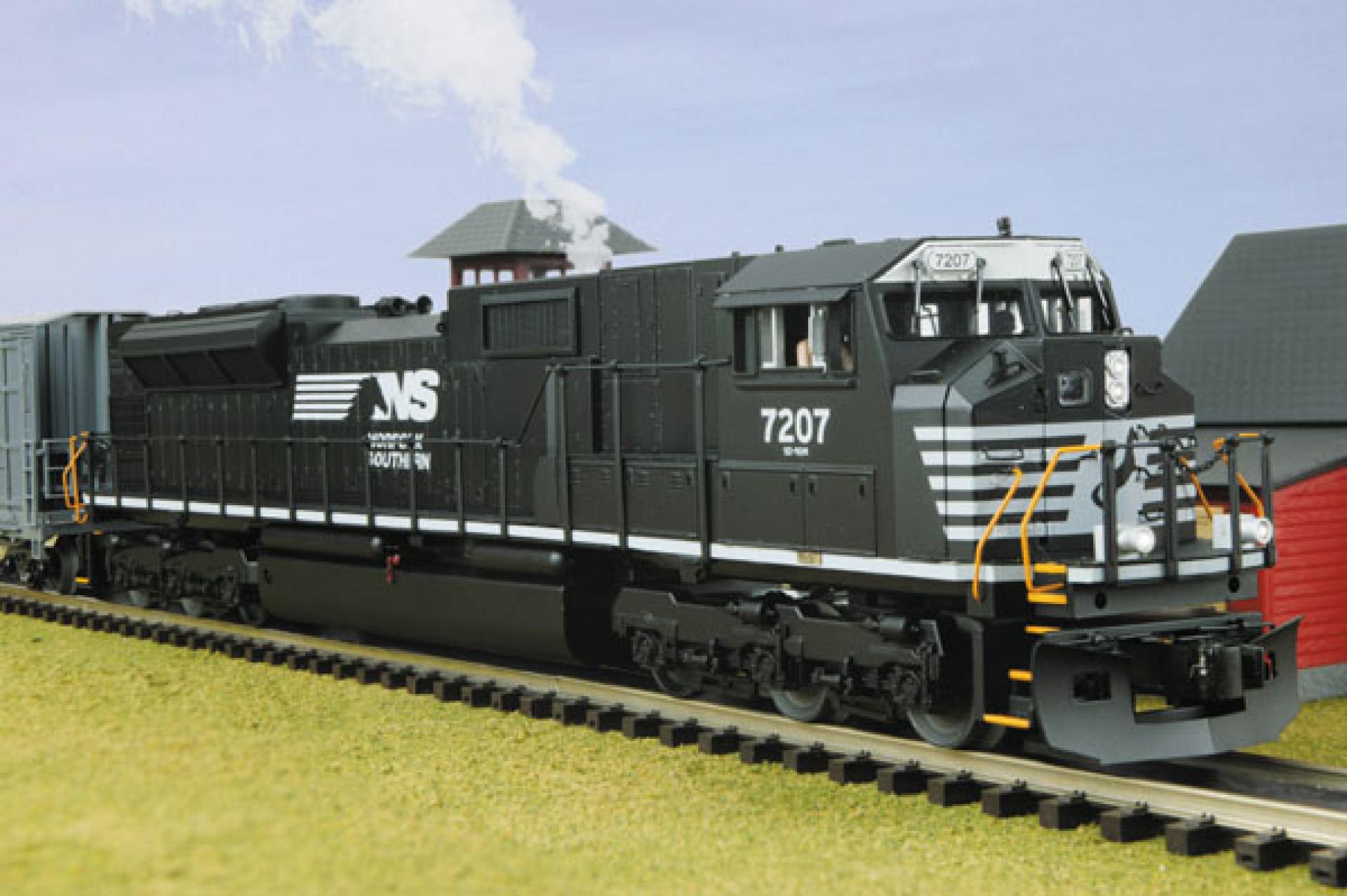

Norfolk Southern O Scale Premier SD-90MAC Diesel Engine With Proto-Sound 2.0
Overview
While they were impressed with GM's results, most railroads chose to wait for the 6,000-hp SD-90MAC, but the railroads that opted to wait for the SD-90MACs initially found themselves with less power when their -90s were delivered in 1996. GM opted to deliver the engines with 4,300-hp prime movers that were designed to be replaced with 6,000-hp engines when they became available. Now that they are operating at full power with a GM16V265H engine, the SD-90MACs offer 170,000 pounds of continuous and 200,000 pounds of starting tractive effort, as well as 115,000 pounds of dynamic braking effort.
Did You Know? GM claims that one SD-90MAC can replace two SD40-2's in both heavy haul and high speed freight operations.
Add a Non-Powered Unit for Realistic Double-Heading!
